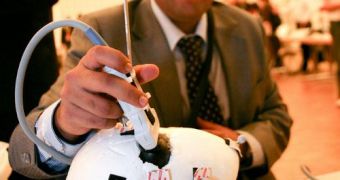Scientists with the European Space Agency (ESA) announce the development of an augmented reality (AU) device for astronauts. This piece of equipment will help people in space diagnose any potential problems with their crew members, as well as enable them to perform basic surgeries.
AU devices were already created for mobile device. Users can aim their smartphones' cameras at various buildings, landscapes and monuments, and a piece of software displays relevant data of that particular target. Similar systems are being tested by engineers as well.
Having the ability to use such a system for medical applications would be an enormous breakthrough, since getting an ambulance to space could take months. Medical emergencies are among the main dangers of space exploration, and astronauts are largely on their own at this point.
The Computer Assisted Medical Diagnosis and Surgery System (CAMDASS) represents an exquisite advancement in reducing some of that uncertainty. The prototype requires the user to wear a head-mounted display for 3D guidance.
At this point, the system is especially well suited for conducting ultrasound investigations. Its developers argue that future improvements will make it capable of guiding many other types of procedures as well.
The best part is that ultrasound devices are already available for use aboard the International Space Station (ISS), meaning that the new tool could easily be put into practical use aboard the orbital lab.
“Although medical expertise will be available among the crew [of future missions] to some extent, astronauts cannot be trained and expected to maintain skills on all the medical procedures that might be needed,”biomedical engineer Arnaud Runge explains. He is the leader of the ESA project.
But the new application is not restricted to use in space. An additional use for it may be in telemedicine, or the practice of guiding doctors or laypersons in conducting medical procedures over the Internet or phone lines.
When the system is further refined, and the prototype is made less bulky, it could be deployed to the third world, where wearers would receive instructions from qualified professionals thousands of miles away.
“Once it reaches maturity, the system might also be used as part of a telemedicine system to provide remote medical assistance via satellite,” Runge explains.

 14 DAY TRIAL //
14 DAY TRIAL //